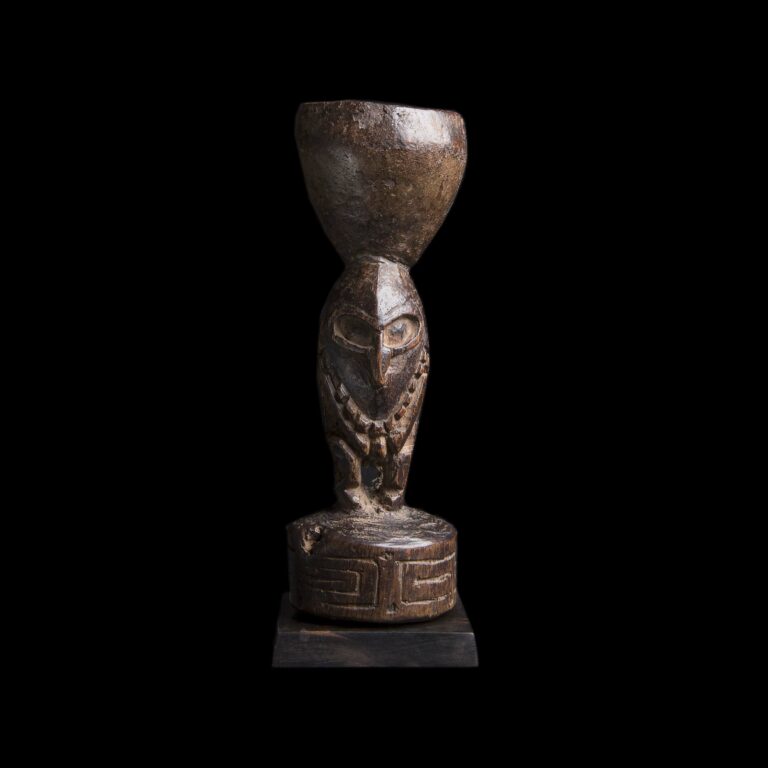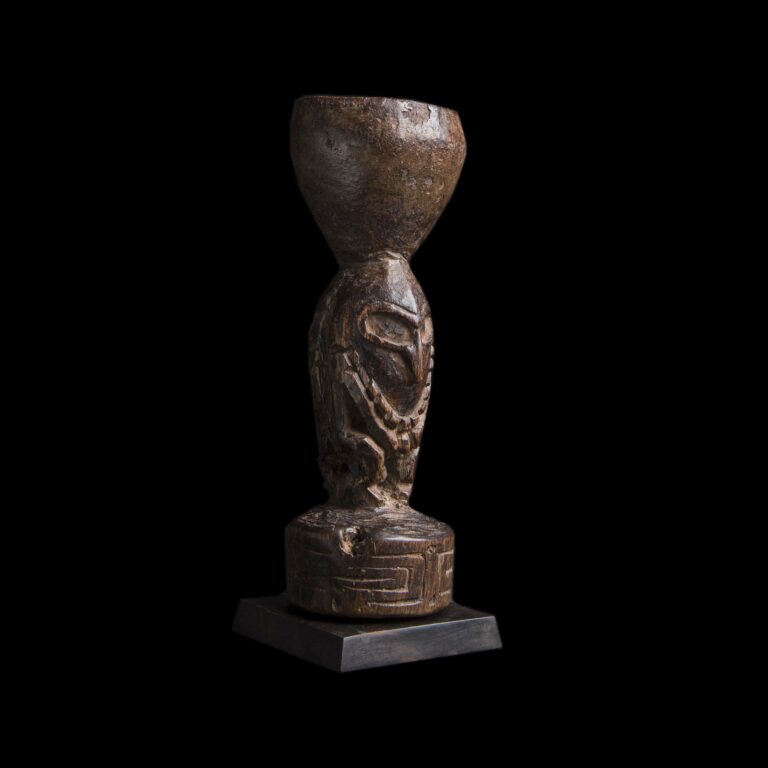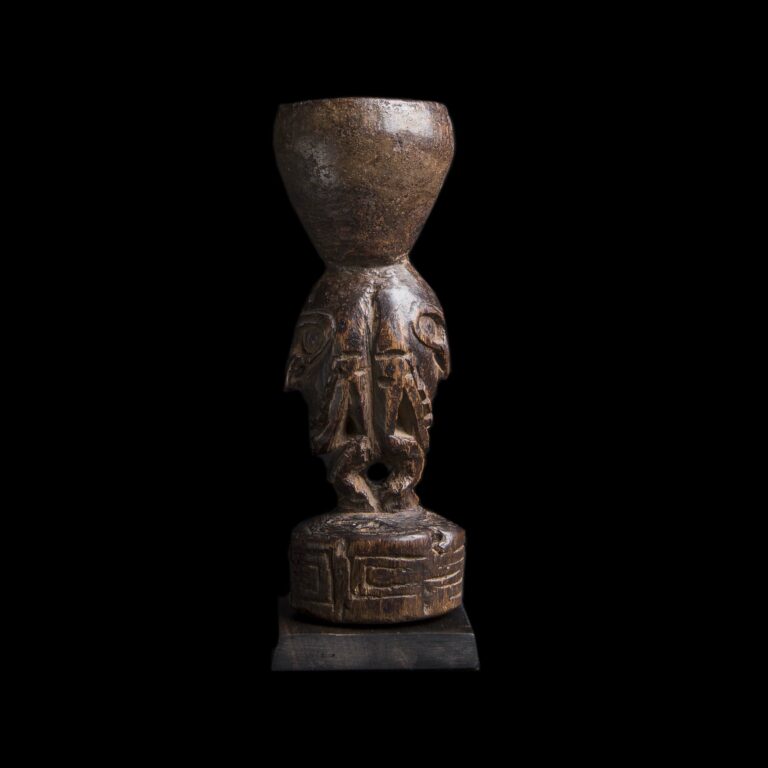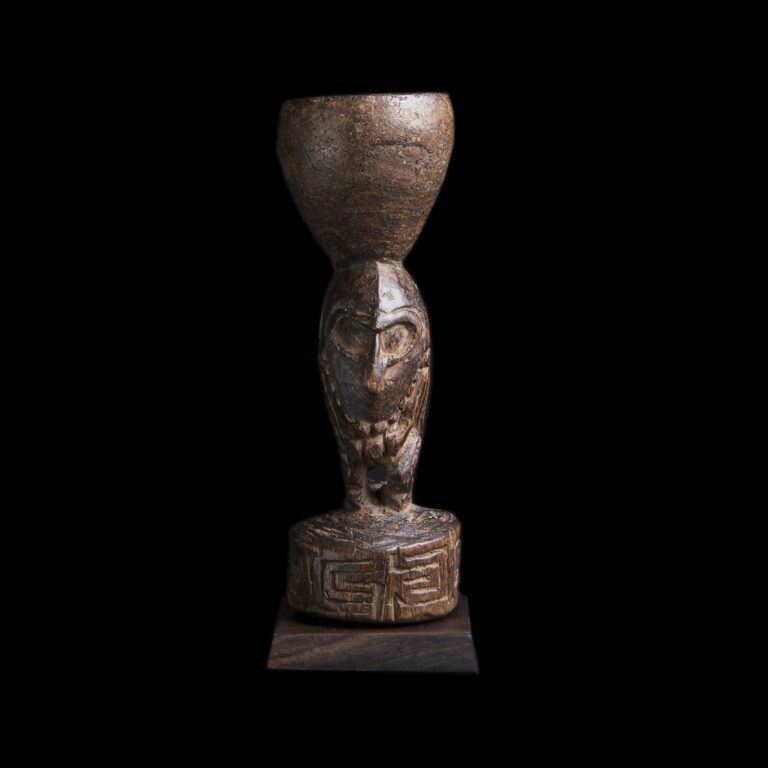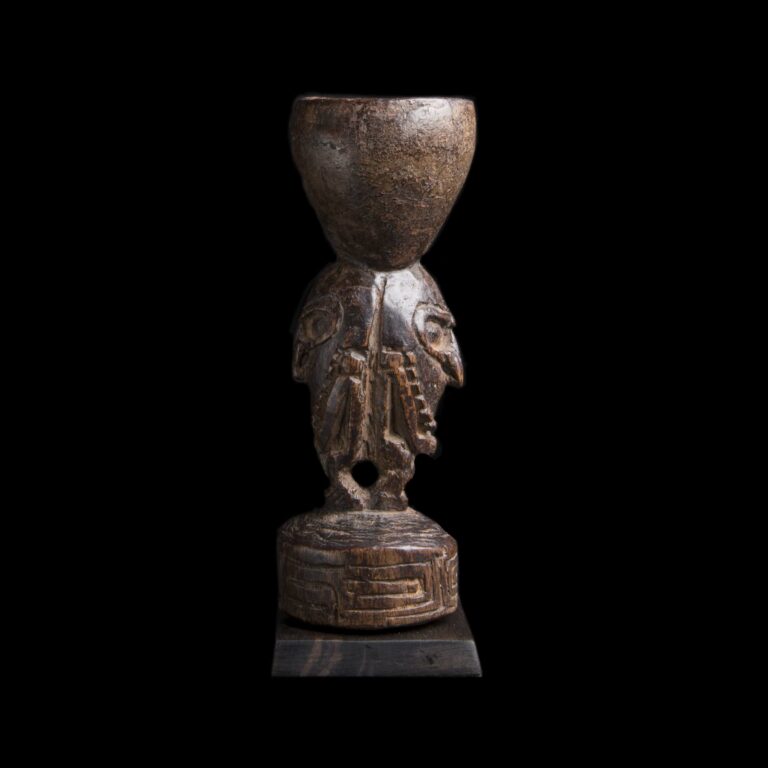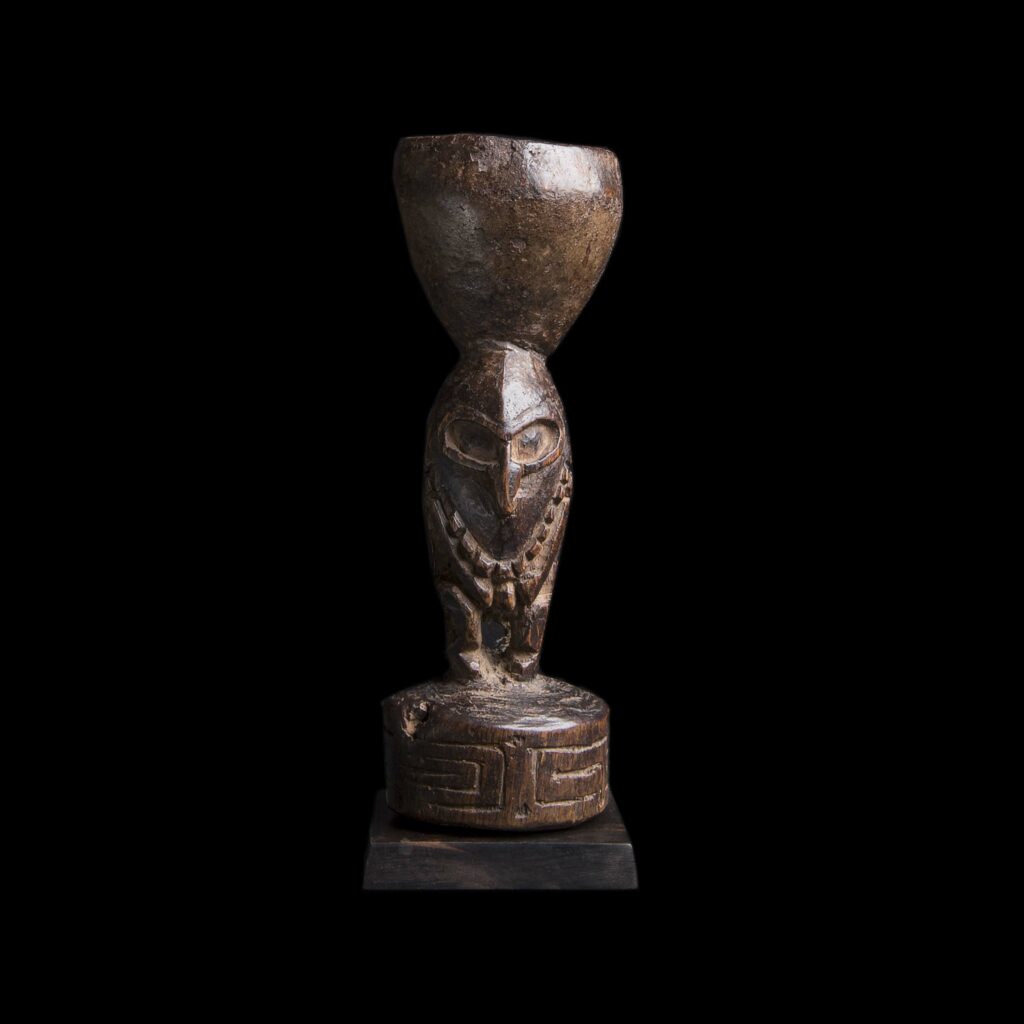
Hardwooden Betel Nut Mortar, Papua New Guinea, Late 19th to early 20th Century
DESCRIPTION/EXPERTISE
Hardwooden Betel Nut Mortar, Ramu River Region, Lower Sepik, East Sepik Province, Papua New Guinea, Late 19th to early 20th Century
This beautiful hardwooden utilitarian object was made and used as early as the late 19th, to early 20th century, by people living around the Ramu river in the Sepik region of Northern Papua New Guinea. This object is called a mortar and can be considered a helping tool in ingesting the stimulant effects of the betel nut, the fruit of the Areca Palm. The betel nut was, and is till today, used in the region to reach an hallucinatic state, when chewed in combination with lime, made from burnt shells or corals. The mortar which has a cup-like form, was used together with a little pestle, in order to crush the nuts, together with the lime, after which the mesh was put in the mouth. It was probably used by the elderly or individuals who allready lost their teeth. This specific object still holds some residue of the mixture.
In this case the cup is hold by two back to back male ancestral figures, who are positioned on a wooden base. The two figures have mask-like faces, their arms are resting on their abdomen, and as often seen in other objects from this region, their knees are bent. It is often believed that the depicted carriers, are spirits, ancestors or supernaturals beings, and that they had some magical properties, which gave the mortar not only had a utilitarean purpose, but also a religious one.
MEDIUM
SIZE
PROVENANCE
EX. Collection Adam Prout Didbrook
LITERATURE:
E. KJELLGRENN (ed.), Oceania: Art of the Pacific Islands in The Metropolitan Museum of Art, Metropolitan Museum of Art Publication, New York, 2007, p. 105.
H. BERAN, Betel-Chewing Equipment of East New Guinea, Indiana University, 1988, p. 54-56.
PRICE
Expertly mounted
All dimensions are without the mounting

